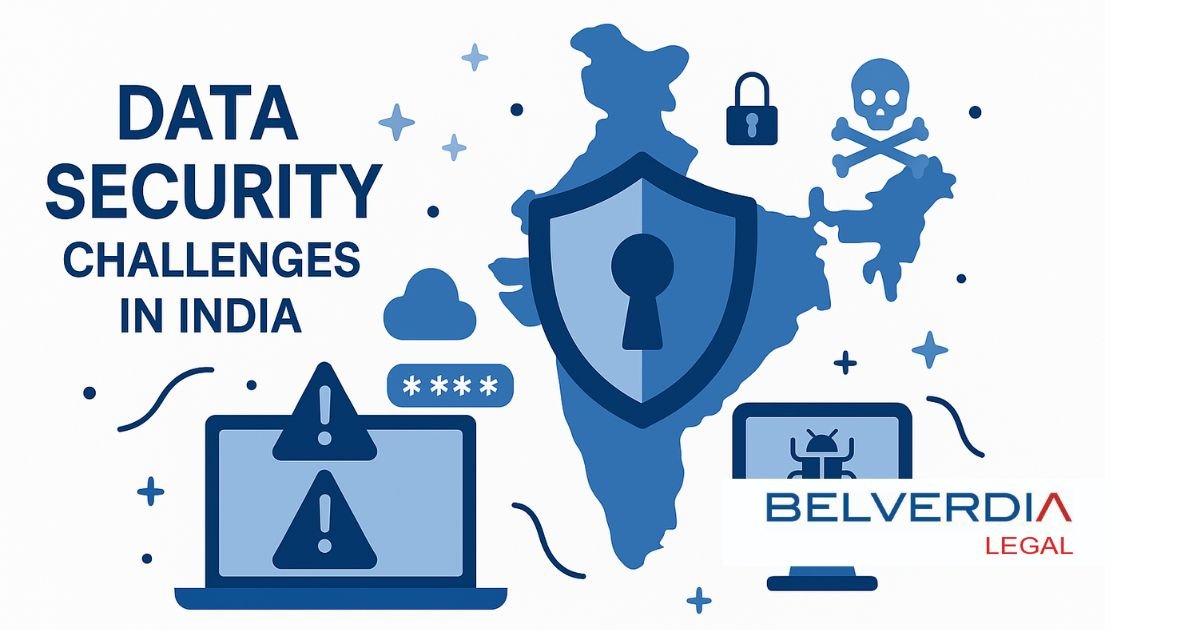I. Data security in India faces several challenges that contribute to its poor state. Here are some key reasons:
I(a) Inadequate Infrastructure and Regulations:
Lack of critical infrastructure and weak cybersecurity regulation hinder India’s data security preparedness.
Insufficient national cybersecurity law and dedicated ministry to oversee cybersecurity threats.
I(b) Data Protection Legislation Gap:
Comprehensive data protection legislation is still pending, leaving digital rights and privacy of users exposed.
Existing laws, such as the Information Technology Act of 2000, are inadequate for modern digital complexities.
I(c) Resource Constraints and Reliance on Foreign Infrastructure:
Insufficient resources dedicated to cybersecurity lead to a constant “firefighting” mode, leaving little time for learning, strategizing, or improving defenses.
Reliance on foreign-owned social networking sites and hardware creates unique national security challenges and exposes India to additional cyber threats.
I(d) Cybersecurity Threats and Breaches:
Increasing cybersecurity incidents, with over 674,000 reported in the first half of 2022.
Large-scale data breaches, such as the alleged CoWIN data breach and the allegations on ICMR breach compromising 81.5 crore individuals’ data.
I(e) Lack of Awareness and Digital Literacy:
General public’s ignorance of digital rights and data privacy laws makes them vulnerable to exploitation.
Limited awareness and poor digital hygiene contribute to rising cyber fraud cases.
I(e)(1) Other Challenges:
Data Localization: Stringent data localization provisions could help enhance control over data and its security.
Public-Private Partnerships: Fostering partnerships between government, industry, and academia can help develop innovative solutions to cybersecurity challenges.
Regular Cybersecurity Audits: Implementing regular and rigorous cybersecurity audits can ensure adherence to best practices in data security.
II. The challenges in data security can have an indirect impact on content creators and YouTubers, potentially allowing them to tread upon national security in certain ways. Here are some possible scenarios: a.Spreading Misinformation, b. National security threats, c. Data Exploitation, d . Online Radicalization& e. Lack of Accountability
II(a) Spreading Misinformation
National security threats: Content creators can spread misinformation or disinformation that can pose national security threats, such as inciting violence or spreading false information about government policies.
Influence on public opinion: YouTubers and content creators can shape public opinion and influence people’s perceptions, potentially leading to national security implications.
II(b) Data Exploitation
User data collection: Content creators can collect user data without consent, potentially compromising national security.
Data sharing and misuse: Collected data can be shared or misused, leading to national security concerns.
II(c) Online Radicalization
Radical content: Content creators can spread radical or extremist content, potentially leading to online radicalization and national security threats.
Terrorist recruitment: YouTubers can be used as a platform for terrorist recruitment or propaganda.
II(d) Lack of Accountability
Anonymity: Content creators can remain anonymous, making it challenging to hold them accountable for national security breaches.
Lack of regulation: Insufficient regulation and oversight can enable content creators to tread upon national security without consequences.
II(e) Potential Consequences
National security breaches: The cumulative effect of these scenarios can lead to national security breaches, compromising the safety and security of individuals, organizations, and the nation as a whole.
To mitigate these risks, it’s essential to:
i)implement robust data security measures,
ii)regulate online content, and
iii) promote digital literacy & awareness.
Prepared by:
Belverdia Legal LLP.

